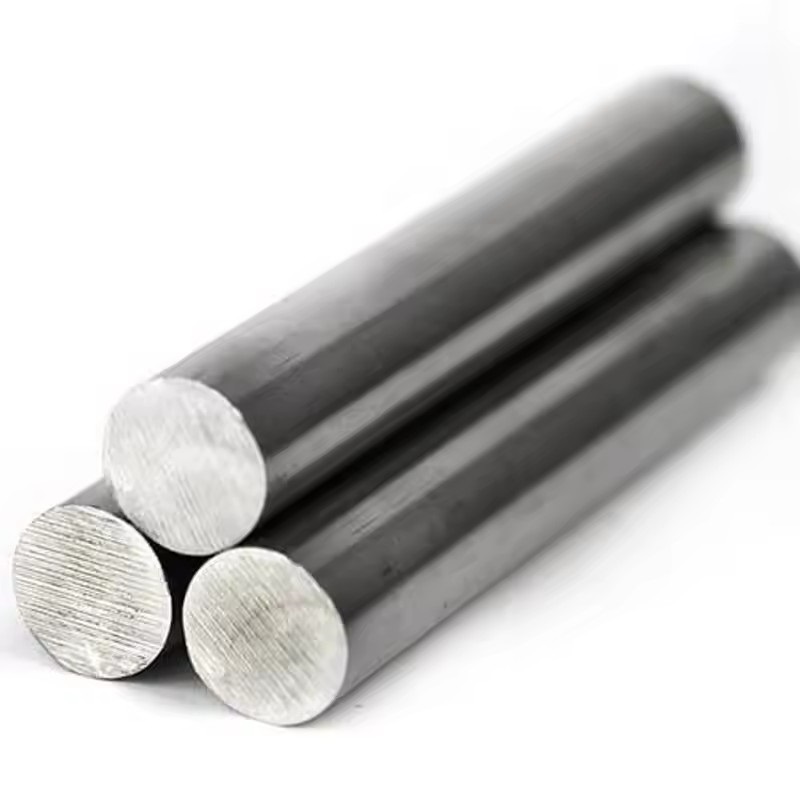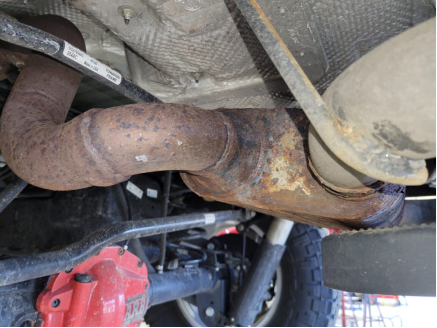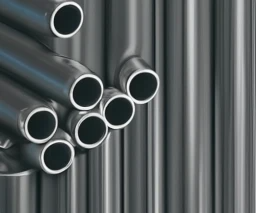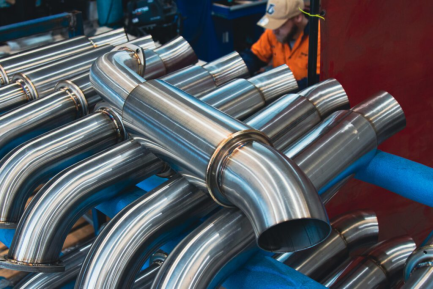304 vs 409 Stainless Steel: Which Do You Think Is Better?
 Jun 14,2024
Jun 14,2024

Everyone is familiar with the stainless steel and its importance in construction industry. its Unique features varying with the grade is the most exceptional properties which makes it demanding in other fields as well. The two grades 304 and 409 are the common types for exhaust parts and exhaust systems. Both are highly corrosion resistant and durable. This article will explore all the features in detail.
Definition of 304 Stainless Steel
304 is an austenitic grade. It has chromium and nickel content which makes it highly corrosion resistant. It has good strength, fatigue resistance, toughness, and weldability. It is a common material to use for exhaust systems. This is due to high surface rust protection in harsh conditions. 304 also aesthetically appealing surface finish.

Definition 409 Stainless Steel
409 is a ferritic grade. It has less Cr and Ni than 304. Therefore, it is a cheap option for exhaust parts. But its corrosion resistance is also less and shows surface rust. But 409 can be polished and can return to its original form with same corrosion resistance. it is a good option for high temperature applications.
Does 409 Stainless Steel Rust?
409 does not show surface rust in moderate climate conditions. Most of the exhaust part or exhaust systems are made of 409 which can last up to 8-10 years. It is suitable for high temperature applications. It has better corrosion resistance than mild steel.

Surface rust of 409 exhaust parts
Applications and Parts of 304 and 409 Stainless Steel
T409 vs T304 stainless steelround/square/rectangle/seamless/welded tubes
409 and 304 both are surface rust protected materials. 304 has high nickel content which makes it suitable for harsh condition applications. 409 tubes have high chromium content. These tubes both are used in auto exhaust pipes and exhaust systems. They perform good at elevated temperatures. 409 shows surface rust earlier than 304 without compromising structural integrity.

T409 vs T304 Steel plates
These are used in bridges, roads for structure supports and most importantly in automotive industries. stainless steel plates are also used in military, oil, gas and energy sectors.
Flat/angle/channel and round bars
409 and 304 steel bars are used in catalytic converters, mufflers, farm equipment and for structural supports and hangers in bridges, road and building construction.
I-beams
409 and 304 beams are sed in structural supports and hangers and in furnace components. 304 has many applications as architectural cladding material. it is also used in food processing and marine industries.
Sheet metal
304 and 409 sheet are used in making bodywork and panel of machines. It is used to make grills, cookware, pots and cookers. Other applications include bolts, nuts, washers, bearings, gears, springs, flanges, coupling, valves, pumps for heat exchangers and exhaust systems and exhaust parts due to good performance in high temperature.
Exhaust Pipe
T409 and T304 exhaust systems are the best choice among all the material. Comparing T409 vs T304 exhaust systems and exhaust parts, 304 has the highest quality for automotive utilization. Mostly exhaust systems clamps, bolts, and other exhaust parts are made of 304 due to good performance in high temperature.
409 exhaust systems are not visually good. But these are durable and has surface rust protection. 409 exhaust parts are used in agricultural equipment. Its exhaust systems are also used in heat and turbine silencers

Surface rust protected 304 exhaust systems
Material Standards
|
Standard |
409 |
304 |
|
UNS |
S40900 |
S30400 |
|
BS |
409S19 |
304S14 |
|
EN |
1.4512 |
1.4301 |
|
EU |
X6CrTi12 |
X5CrNi8-10 |
|
Japanese |
SUH409 |
SUS304 |
Advantages and Disadvantages of 304 and 409 Stainless Steel
T409 vs T304 advantages
409 has high temperature resistance. Its surface rust protection is for 8-10 years. It has high ductility, strength. It is durable in heat and chemicals. It has better corrosion resistance than mild steel.
304 steels have high surface rust protection. it can survive high temperatures. It has good oxidation and corrosion resistance in seawater, alkaline and acidic medias.
T409 vs T304 disadvantages
409 has less corrosion resistance than 304. Its surface rust appears sooner than 304. 304 has higher nickel content which makes it more corrosion resistant.
304 is expensive for exhaust parts and exhaust system than 409. Furthermore, it is prone to pitting and intergranular corrosion.
Chemical Composition
T409 vs T304 chemical composition is as:
|
Elements |
304 |
409 |
|
Chromium |
17-20% |
10-11% |
|
Nickle |
8-10% |
0.5% |
|
Manganese |
2% |
1% |
|
Silicon |
1% |
0.75% |
|
Nitrogen |
0.1% |
0.1% |
|
Carbon |
0.04-0.08% |
0.08% |
|
Phosphorus |
0.04% |
0.045% |
|
Sulfur |
0.02% |
0.3% |
|
Titanium |
- |
0.75% |
Corrosion Resistance
In T409 vs T304 corrosion resistance, 304 has higher corrosion resistance. It contains higher chromium and nickel content which makes its surface rust proof. 409 also has better corrosion resistance than mild steel.
Physical Properties
T409 vs T304 physical properties are as:
|
Physical properties |
304 |
409 |
|
Color |
Shiny |
matt |
|
Density |
7.93g/cm3 |
7.73g/cm3 |
|
Melting point |
1400-1450 |
1405 |
|
Magnetism |
no |
yes |
|
Thermal conductivity |
16.2W/m.K |
26Wm/.K |
|
Coefficient of Thermal Expansion |
17.2 µ |
 Tel/WeChat:
Tel/WeChat:  Email:
Email: 
 Home
Home
 409 Stainless Steel: A Comprehensive Guide for Engineers and Designers
409 Stainless Steel: A Comprehensive Guide for Engineers and Designers 







